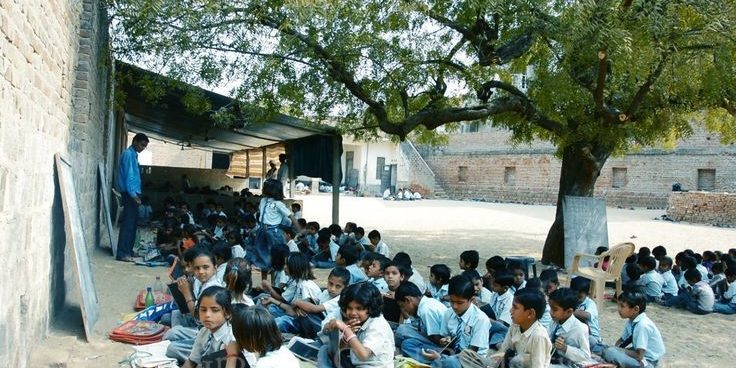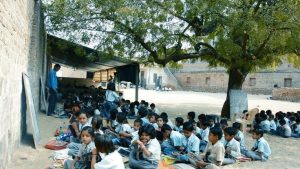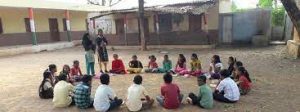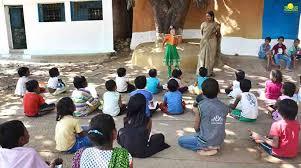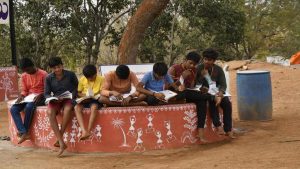Challenges Facing Rural Education in India
BEST CAREER COUNSELLOR FOR STUDENTS IN DELHI NCR
Education is a key driver of social and economic development. It empowers individuals, uplifts communities, and drives national growth. However, despite significant improvements in education in India over the last few decades, rural education continues to face a variety of challenges. Rural India, where a majority of the population resides, accounts for a significant portion of the country’s educational struggles. These challenges are multifaceted, stemming from socio-economic, infrastructural, cultural, and political factors. This blog will examine the key challenges facing rural education in India and explore potential solutions to improve access, quality, and outcomes for rural students.
1. Lack of Basic Infrastructure
A significant challenge facing rural education in India is the absence of adequate infrastructure. Schools in rural areas often lack basic amenities like classrooms, clean drinking water, sanitation facilities, and electricity. Inadequate physical infrastructure makes learning uncomfortable and hampers the academic performance of students.
Many schools operate in dilapidated buildings with poorly maintained classrooms. Teachers and students are often exposed to harsh weather conditions because the buildings lack proper ventilation, lighting, and roofing. Furthermore, the lack of toilets, especially for girls, prevents students from attending school regularly. The absence of computers, libraries, and other teaching aids makes the learning experience dull and ineffective.
Top career counseling for students in North Delhi: Rohini, Pitampura, and Shalimar Bagh
2. Teacher Shortages and Low Quality of Teaching
In rural India, there is a chronic shortage of trained and qualified teachers. Many teachers in rural schools are either unqualified or underqualified, and their teaching methods are often outdated. This shortage is further exacerbated by a lack of incentives to attract qualified professionals to rural areas. Teachers in rural schools are often overworked, teaching multiple subjects across different grade levels, which affects their effectiveness.
Moreover, there is often a high teacher absenteeism rate in rural schools. Teachers may be absent due to personal reasons, lack of motivation, or due to the challenges posed by the remote location of the school. This leads to irregular school schedules and an inconsistent learning experience for students.
3. Poor Access to Education
One of the most significant barriers to education in rural India is poor access to schools. Many rural areas are isolated, with limited or no transportation infrastructure. In some cases, children have to walk several kilometers to attend school, which discourages attendance, particularly among young children, girls, and students from marginalized communities.
The lack of transport facilities and safe roads is a particular concern in rural regions, making it difficult for children to attend school regularly. This issue becomes more pronounced during the monsoon season, when roads become impassable, and transportation becomes even more challenging.
Best career counseling services in South Delhi: Hauz Khas, Saket, and Greater Kailash
4. Economic Constraints and Poverty
Poverty is a major determinant of educational outcomes in rural India. Many families in rural areas struggle to make ends meet, and education is often seen as a secondary priority. Children are frequently expected to contribute to the family’s livelihood, either by working in agriculture or taking on household responsibilities.
As a result, many children in rural areas drop out of school at an early age to support their families. Even when children do attend school, they may lack the necessary resources like books, uniforms, and stationery. Additionally, poverty often means that children cannot afford tuition fees or the opportunity cost of sending their children to school rather than having them work.
5. Gender Disparities in Education
Gender disparity remains one of the most significant challenges in rural education. In many rural areas, there is a deep-rooted belief that educating boys is more important than educating girls. Families may prioritize sending their sons to school while girls are expected to perform household chores or assist in agricultural work.
While there have been improvements in female enrollment rates, dropout rates for girls, especially after puberty, remain high. The lack of safe infrastructure, sanitation facilities (such as girls’ toilets), and a culturally ingrained preference for boys’ education contribute to these high dropout rates. Girls may also face sexual harassment, both on the way to school and within school premises, leading to fear and further reducing their chances of completing their education.
6. Cultural and Social Barriers
Cultural norms and social structures play a significant role in determining educational outcomes in rural India. In many regions, there are conservative attitudes towards education, especially for girls, children with disabilities, and children from lower castes or marginalized communities.
For instance, children from Dalit or Adivasi (indigenous) communities face discrimination and social exclusion, making it harder for them to access quality education. Teachers may harbor biases and treat children from marginalized communities as inferior, leading to feelings of alienation and poor academic performance. In some rural communities, the caste system or tribal customs discourage the education of certain groups, thus limiting their opportunities.
Moreover, there is often a lack of parental awareness about the importance of education, particularly in rural and tribal areas. Parents may not value formal education or may be unaware of the benefits of education in the modern economy.
Best career counseling services in West Delhi: Janakpuri, Rajouri Garden, and Punjabi Bagh
7. Language Barriers
In rural India, students often speak regional languages or dialects at home, while the medium of instruction in schools is usually Hindi or English. This language gap can be a significant barrier to learning, as students may struggle to understand lessons taught in languages they are not fluent in.
This challenge is particularly pronounced in remote areas where the linguistic diversity is vast, and many schools lack resources to teach students in their mother tongue. The language barrier leads to poor comprehension, low student engagement, and higher dropout rates.
8. Health Issues and Malnutrition
Health problems and malnutrition are prevalent in many rural communities, which directly affect the educational performance of children. Inadequate nutrition can lead to stunted growth, reduced cognitive development, and increased absenteeism. Malnourished children are more likely to fall ill and miss school, which further hampers their academic performance.
Rural children also face health issues like lack of access to regular medical check-ups, poor sanitation, and the spread of diseases such as malaria, tuberculosis, and diarrhea. These health problems not only reduce school attendance but also impair cognitive abilities, leading to lower academic achievement.
9. Inadequate Use of Technology
Despite the potential of technology to enhance education, its usage in rural schools is often limited due to a lack of infrastructure, teacher training, and resources. While urban schools have embraced digital tools like online learning platforms, e-books, and multimedia classrooms, many rural schools lack access to basic technology, such as computers, internet connectivity, and even televisions or radios for educational purposes.
The pandemic has further highlighted this divide, with many rural students lacking access to online classes due to poor internet connectivity and the absence of devices like smartphones or laptops. The digital divide thus exacerbates educational inequality, limiting the ability of rural students to access the same learning opportunities as their urban counterparts.
10. Political and Administrative Issues
The political and administrative structure in rural India also plays a role in shaping educational outcomes. Corruption, mismanagement of funds, and inefficiency in the implementation of educational policies can significantly hamper the development of rural education. For instance, government schemes aimed at improving education, such as the Mid-Day Meal Scheme, may be poorly implemented due to bureaucratic delays or local corruption.
Further, rural schools often face issues like inadequate supervision, lack of accountability, and poor coordination between different levels of government. These administrative challenges hinder the effective implementation of policies and programs designed to address educational disparities in rural areas.
11. Lack of Community Participation
Community participation is essential to the success of any educational initiative. However, in many rural areas, communities are not actively involved in the education process. This lack of involvement leads to a disconnect between schools and the local context, making it harder to address specific needs.
The absence of community support and involvement can lead to a lack of ownership over the education process, poor infrastructure maintenance, and lower student enrollment and retention rates. In some rural communities, traditional beliefs and attitudes toward education may discourage engagement with schools, especially when it comes to girls’ education.
Solutions to Overcome These Challenges
To address these challenges, several strategies can be adopted:
- Improved Infrastructure: Investment in school infrastructure is essential to create safe, comfortable, and conducive learning environments. Schools need to be equipped with basic amenities like toilets, clean drinking water, electricity, and proper classrooms.
- Teacher Training and Incentives: Teachers in rural areas must be adequately trained and motivated. Offering incentives like higher salaries, professional development opportunities, and housing benefits can attract and retain qualified teachers in rural schools.
- Transportation and Accessibility: Providing better transport facilities, especially for students in remote areas, can help improve attendance. Schools could also be built closer to rural communities to minimize the distance children need to travel.
- Awareness Campaigns: Awareness campaigns targeting parents and communities about the importance of education, especially for girls, can help change attitudes. Involving local communities in school management and decision-making can also lead to better outcomes.
- Use of Technology: Leveraging technology to provide remote learning, digital resources, and e-learning platforms can bridge the gap between rural and urban education. The government and private sector should invest in providing affordable digital tools and internet connectivity to rural schools.
- Addressing Gender Disparities: Initiatives such as building separate sanitation facilities for girls, providing scholarships, and creating safe school environments can help reduce gender disparities in rural education.
- Health and Nutrition Programs: Ensuring access to healthcare, clean water, and nutritious meals for rural children is crucial. The Mid-Day Meal Scheme and other health-focused initiatives should be expanded to ensure students’ well-being.
Best career counseling services in East Delhi: Laxmi Nagar, Preet Vihar, and Mayur Vihar.
Conclusion
While rural education in India faces a multitude of challenges, it also presents an opportunity for systemic reform and innovation. By addressing issues related to infrastructure, teacher quality, accessibility, and community engagement, the education system can be transformed to better serve the rural population. With the right mix of government policies, community involvement, and technological advancements, rural education can play a pivotal role in shaping India’s future and ensuring that every child, regardless of their background, has access to quality education.

